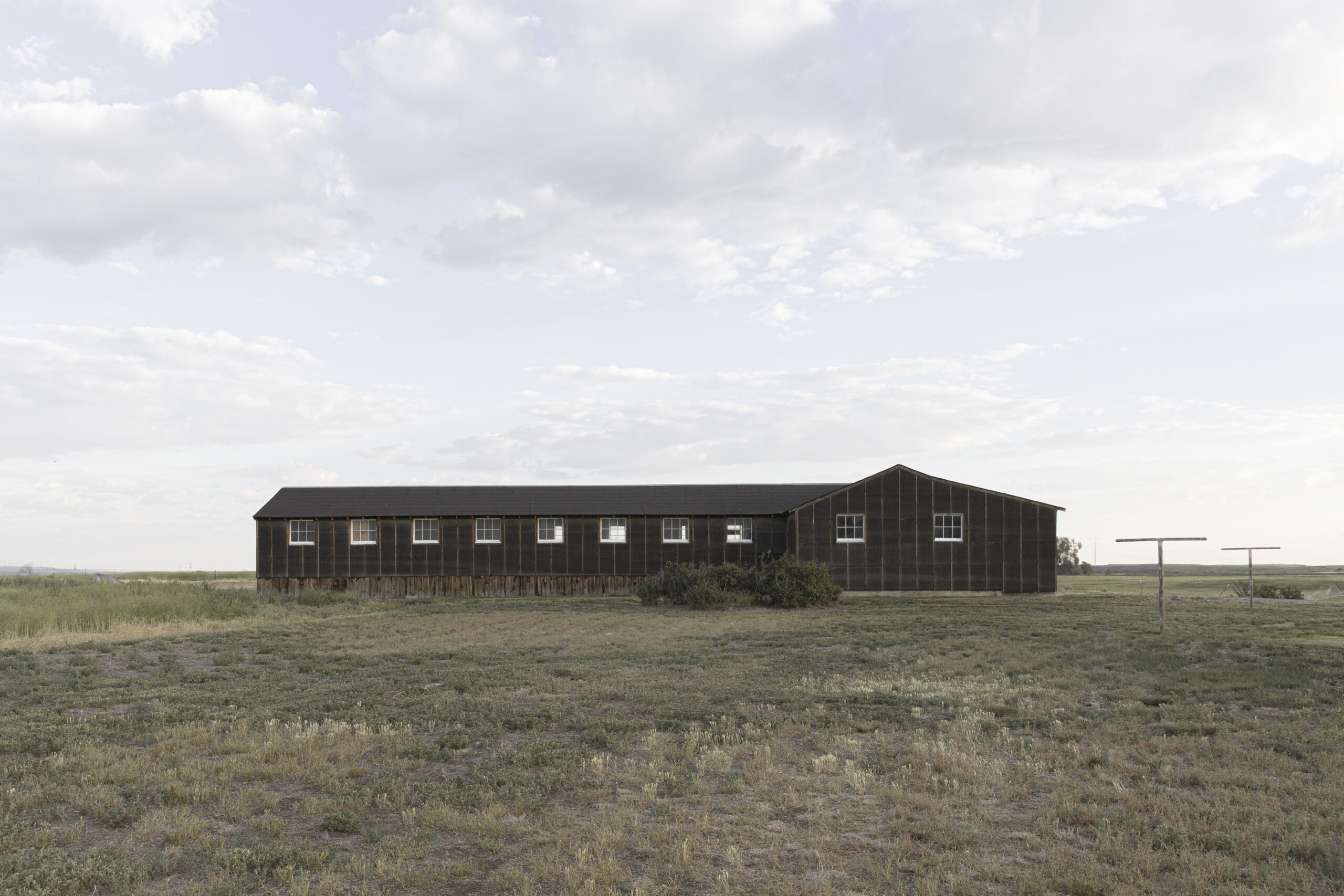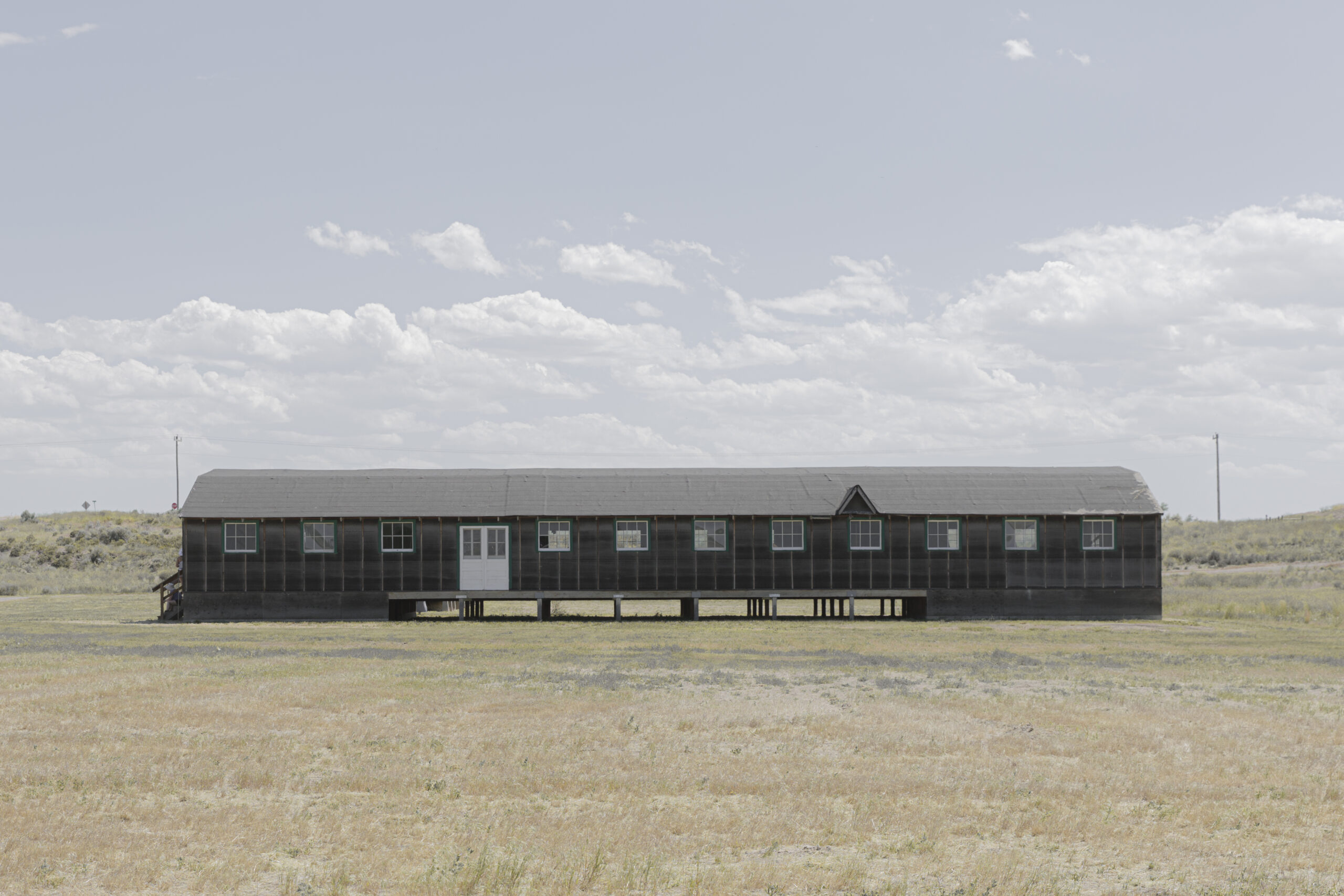
Located in the Magic Valley of south-central Idaho, Minidoka is known for having the highest rate of volunteers for the U.S. Army and most subsequent casualties of any War Relocation Authority concentration camp. It was situated on 33,000 acres of arid desert, which was mostly covered in sagebrush. Winter temperatures frequently dipped below zero and summer temperatures reached above 100 degrees.

The War Relocation Authority‘s master plot plan for Minidoka. Courtesy of the National Archives and Records Administration.
Incarcerees were housed in uninsulated barracks made of tar paper and greenwood. Rainfall in the spring and autumn months turned the ground into ankle-deep mud, which made getting around the camp difficult.

A block of barracks at Minidoka concentration camp. August 1943. Courtesy of National Archives and Records Administration.

Minidoka was designated a National Historic Site in 2008 and is currently maintained by the National Park Service. July 8, 2023.
Most Minidoka incarcerees were from the Pacific Northwest, making it one of the most homogenous incarceree populations out of the 10 War Relocation Authority concentration camps. They began arriving in August of 1942; however, due to a parts shortage, the camp sewage system was incomplete when the incarcerees arrived. This meant that there were no flush toilets, and incarcerees had little choice but to use outdoor pit latrines for several months after their arrival. In addition, newly laid pipelines broke frequently. The sewer system was not operational until January of 1943. Several barrack blocks did not even have lights.
To make life more bearable, incarcerees scavenged lumber stocks and made their own furniture. They installed makeshift plank sidewalks in front of their barracks to avoid wading through the mud. Some used the wood for burning, as there was not enough coal to heat the barracks during the cold winter months.

Like many of the other camps, the barracks at Minidoka were auctioned off to locals after the war. This old barrack was acquired by a local farmer, who restored the siding and roof.

A three-panel display listing the names of incarcerees who served in the military. Minidoka had the highest percentage of incarcerees to serve in the military.

The War Relocation Authority utilized incarceree labor to farm and produce the camp population’s food. Root cellars like this stored crops to be distributed to the camp and sent to other WRA camps.

Baseball and other recreational activities played a key role in the lives of incarcerees. A quote in the September 11, 1943 issue of the Minidoka Irrigator—the camp newspaper—reads, “Old man baseball reigns supreme among our dads and have helped make life in this camp more pleasant for him. Without the game, he’d be lost and idleness would reign supreme instead of baseball.”
Despite the lack of basic necessities, camp administrators began constructing a five-foot-high barbed wire fence on November 6, 1942. Outraged, incarcerees began to sabotage the fence by cutting wires and uprooting posts. In response, the contractor electrified the fence. Though the electrification was turned off after a few hours, resentment continued to build amongst the incarcerees.

An old mess hall, a 40′ x 100′ structure that was designed to seat over 300 people at a time.

Interior of the mess hall. Each mess hall contained three coal burning army ranges on which incarceree chefs cooked for the camp population.
After continued protest and vandalism, most of the fence was finally removed, six months later. Incarcerees salvaged the remaining fence posts to use for basic life necessities. In the months that followed, there was a string of protests and work stoppages, including a 160-person labor strike in January of 1944. Despite these conflicts, however, Minidoka experienced relatively fewer incidents of unrest compared to the other 10 War Relocation Authority camps.
Why is Minidoka significant?

Minidoka was often called a “good” camp because it had the second-highest percentage of incarcerees who answered “yes” to Question 28 of the loyalty questionnaire and the second-lowest rate of segregation to the Tule Lake Segregation Center. Most notably, Minidoka had the highest number of volunteers for the U.S. Army and the most subsequent casualties out of the 10 War Relocation Authority concentration camps.
After segregation, over 1,500 “loyal” incarcerees were transferred to Minidoka. This influx led to a housing crisis, since only 335 “disloyal” incarcerees had left Minidoka at the time. Some families were ordered to live in recreation halls with even less privacy than the regular barracks, and others were forced to share living spaces. This housing crisis continued through the spring of 1944.
It is not entirely clear why there were more “loyal” incarcerees at Minidoka, but it may be due to the homogeneity of its incarceree population and the relatively smooth rollout of the loyalty questionnaire and registration for military service compared to the other War Relocation Authority concentration camps. Regardless, Minidoka incarcerees were faced with the same painfully difficult decisions that incarcerees from other camps contended with when responding to the loyalty questionnaire.


